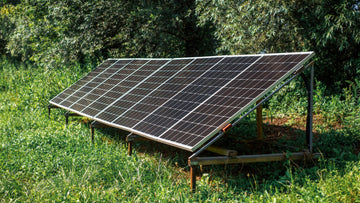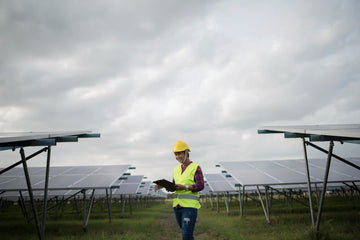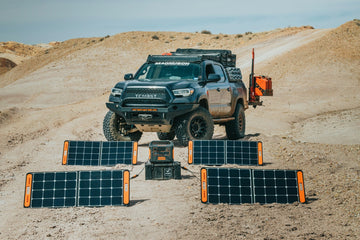Introduction
When choosing solar panels, one of the biggest decisions is monocrystalline vs polycrystalline. Both types have unique advantages, and understanding their differences can help you select the best option for your home, RV, or portable solar system.
1. What Are Monocrystalline Solar Panels?
-
Made from single-crystal silicon, giving them a uniform appearance.
-
Typically black in color and more efficient in converting sunlight into electricity.
-
Space-efficient, making them ideal for roofs or limited areas.
Pros:
-
Higher efficiency (typically 15–22%)
-
Long lifespan (25+ years)
-
Better performance in low-light conditions
Cons:
-
Higher upfront cost
-
Slightly more fragile than polycrystalline panels
2. What Are Polycrystalline Solar Panels?
-
Made from multiple silicon crystals melted together, giving a bluish hue.
-
Slightly lower efficiency but more affordable.
Pros:
-
Lower cost
-
Durable and stable in various conditions
-
Good for larger installations where space is not limited
Cons:
-
Lower efficiency (13–18%)
-
Slightly larger footprint required for the same power output
3. Efficiency and Space Considerations
-
If roof or space is limited, monocrystalline panels are often preferred due to higher efficiency.
-
If budget is tight or you have plenty of space, polycrystalline panels are a practical choice.
4. Durability and Lifespan
-
Both types are durable and can last 20–30 years with proper maintenance.
-
Monocrystalline panels slightly outperform in hot or low-light conditions, giving them an edge for long-term performance.
5. Which One Should You Choose?
-
For portable solar kits: Monocrystalline is ideal due to higher efficiency and compact size.
-
For large-scale home installation: Polycrystalline may be more cost-effective.
-
For off-grid or emergency use: Monocrystalline is preferable for maximum power in limited space.
Conclusion
Both monocrystalline and polycrystalline solar panels have their advantages. Your choice depends on budget, space, efficiency needs, and application. Understanding these factors ensures you get the most out of your solar investment.





